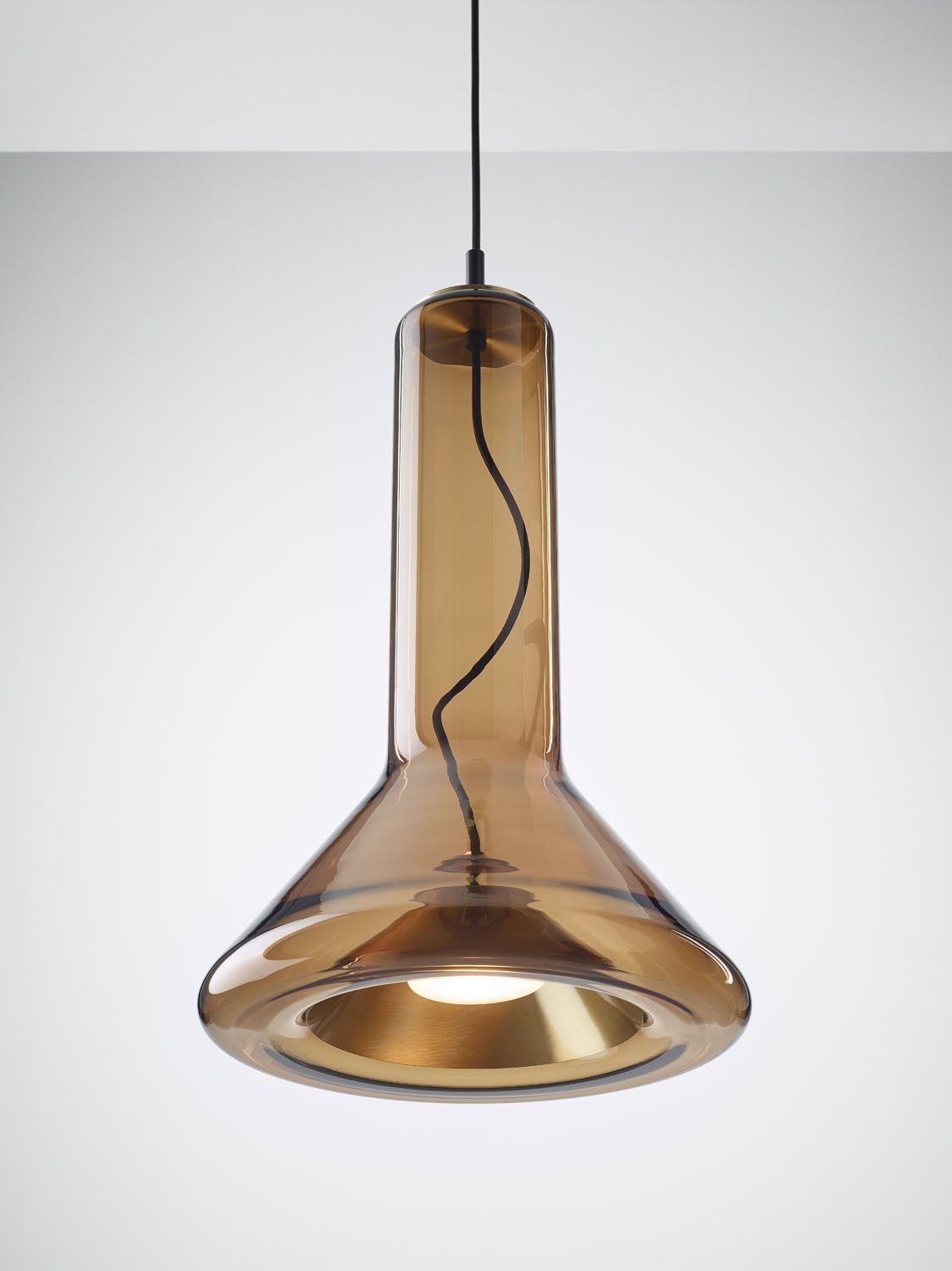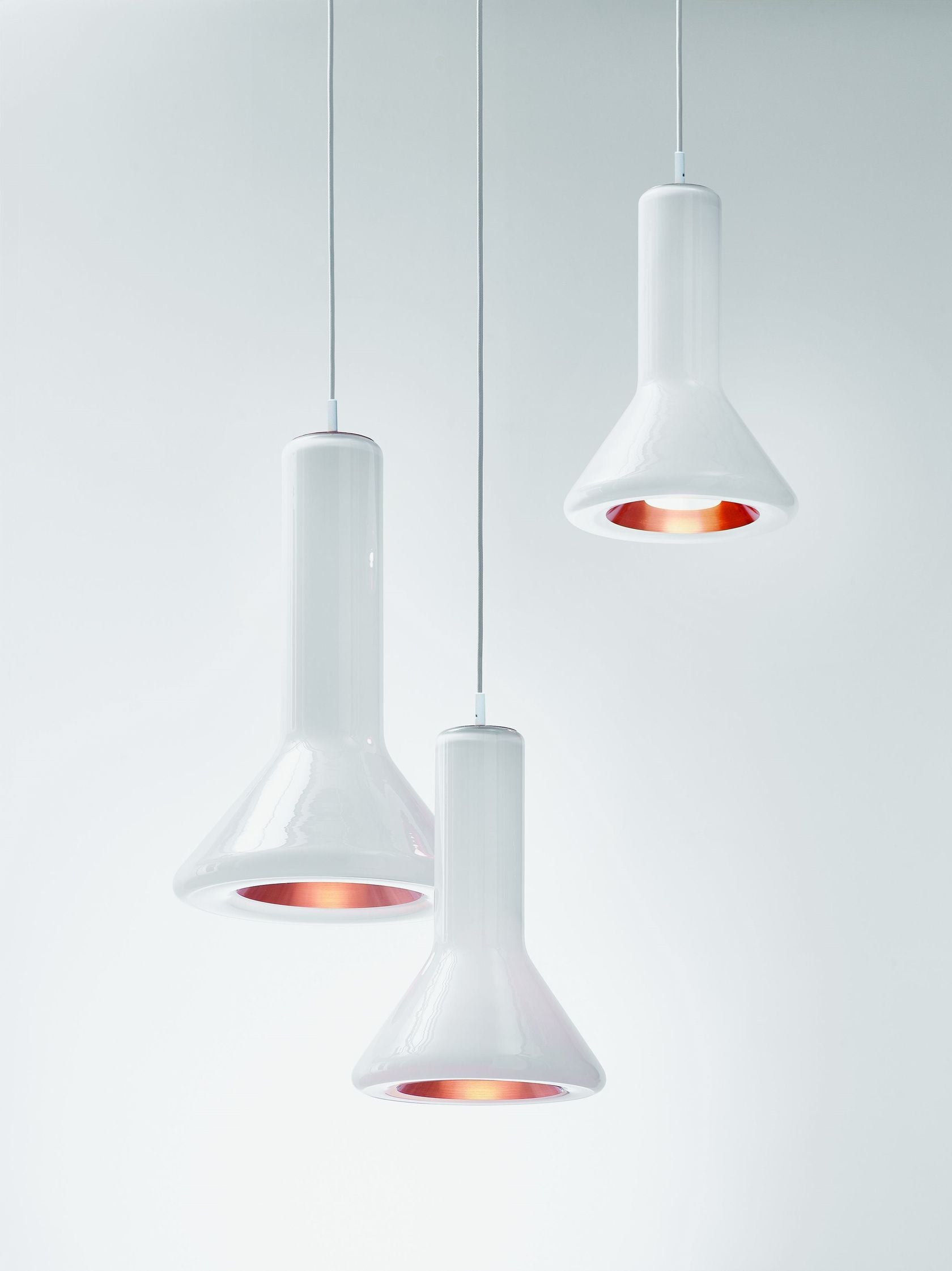Request a quote
Vendor Name
Description
WHISTLE By BROKIS
Collection: Whistle
Designer: Lucie Koldova
Manufacture year: 2013
Product code: PC952, PC953, PC961
Type: Glass pendant lamp
Whistle are glass pendant lights. Glass colour: transparent glass, smoke grey transparent glass, smoke brown transparent glass, opaline transparent glass glass surface: glossy surface reflector: bas – black, grey, white, magenta , menthol add – brass, copper, chrome Input voltage [V]: 230 V Freqvency [Hz]: 50-60 Hz Max. power [W]: 15 W (PC952- PC953), 3 x 15 W LED (PC961) Coverage IP: 20 Socket: GX53 Light source: - Energy class: A+ to B depending on light source The Whistle collection is, quite literally, a living reference to the work of glassmakers, as inspiration for the design was taken from the blowpipe, which in Czech is known as a glassmaker’s whistle. The lucid body of the piece traces the silhouette of a cone of light, and a distinct spotlight with hand-pressed metal shield constitutes its imaginary heart. The overall shape and the naked cable winding its way up through the body of the light define the character of its simplistic technical form. The collection comprises a suspension light in two sizes as well as a set of three lights. From 2018, Whistle is fitted with special integrated connectors developed by Brokis to facilitate installation and cleaning. The craftsmanship applied in production follows in the centuries-old tradition and experience of master glassmakers. The precision crafting of hand-blown glass instills distinctive, enduring character and outstanding quality in all Brokis products. The glass shades are formed from multiple layers of molten glass, each of which is scrutinized by the master glassmaker prior to being blown into the mold. Up to 70% of the resulting quality is achieved in this stage of production. The metal reflector is manufactured through a unique metal stamping technique that has been proven over the course of millennia and involves spinning cold sheet metal on a rotating form. The history of this technology goes back to Celtic times. As with the glassmakers, the master metalworkers draw upon the tradition and experience that have been carefully passed down through the ages and give the final product exceptional added value.














